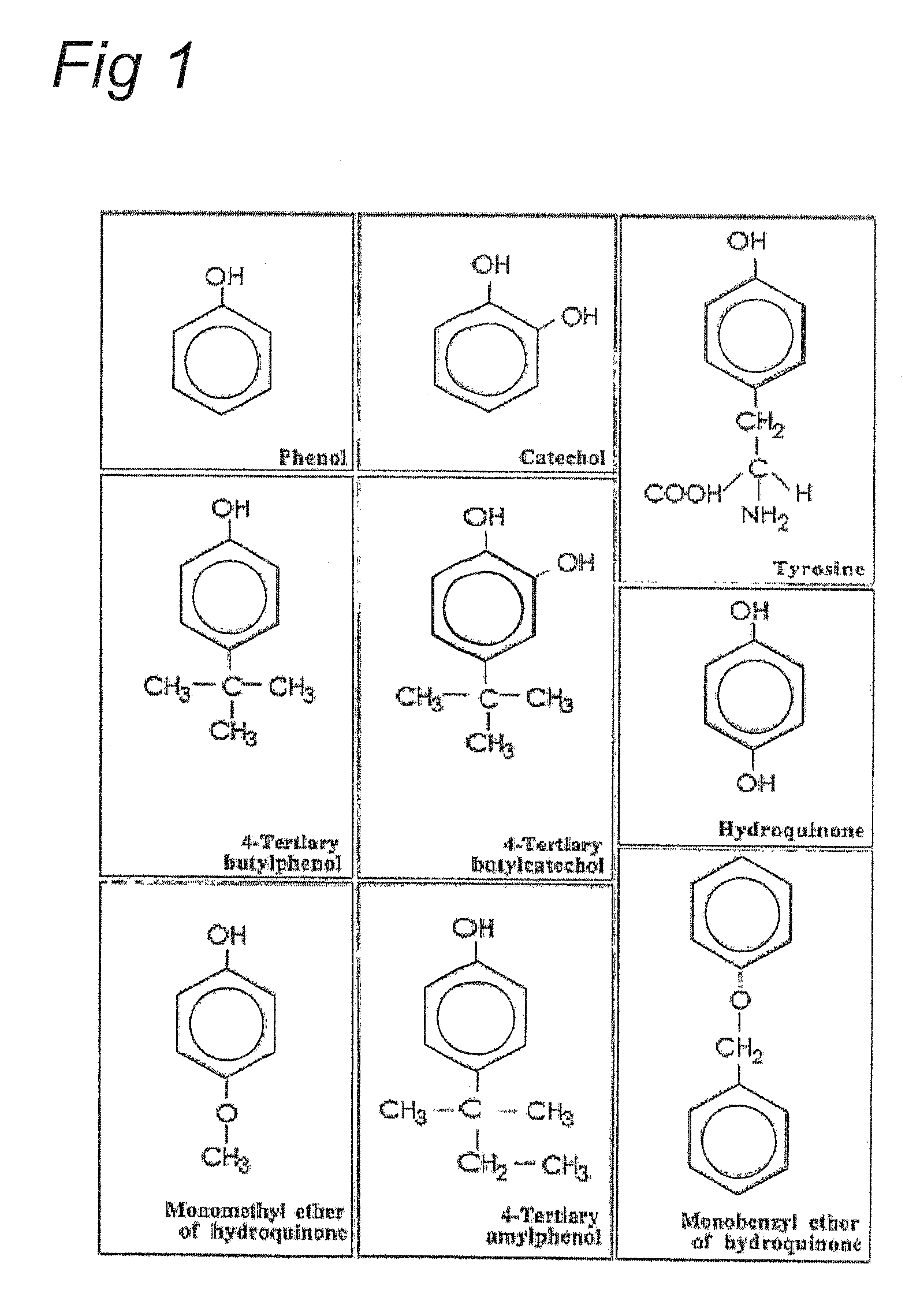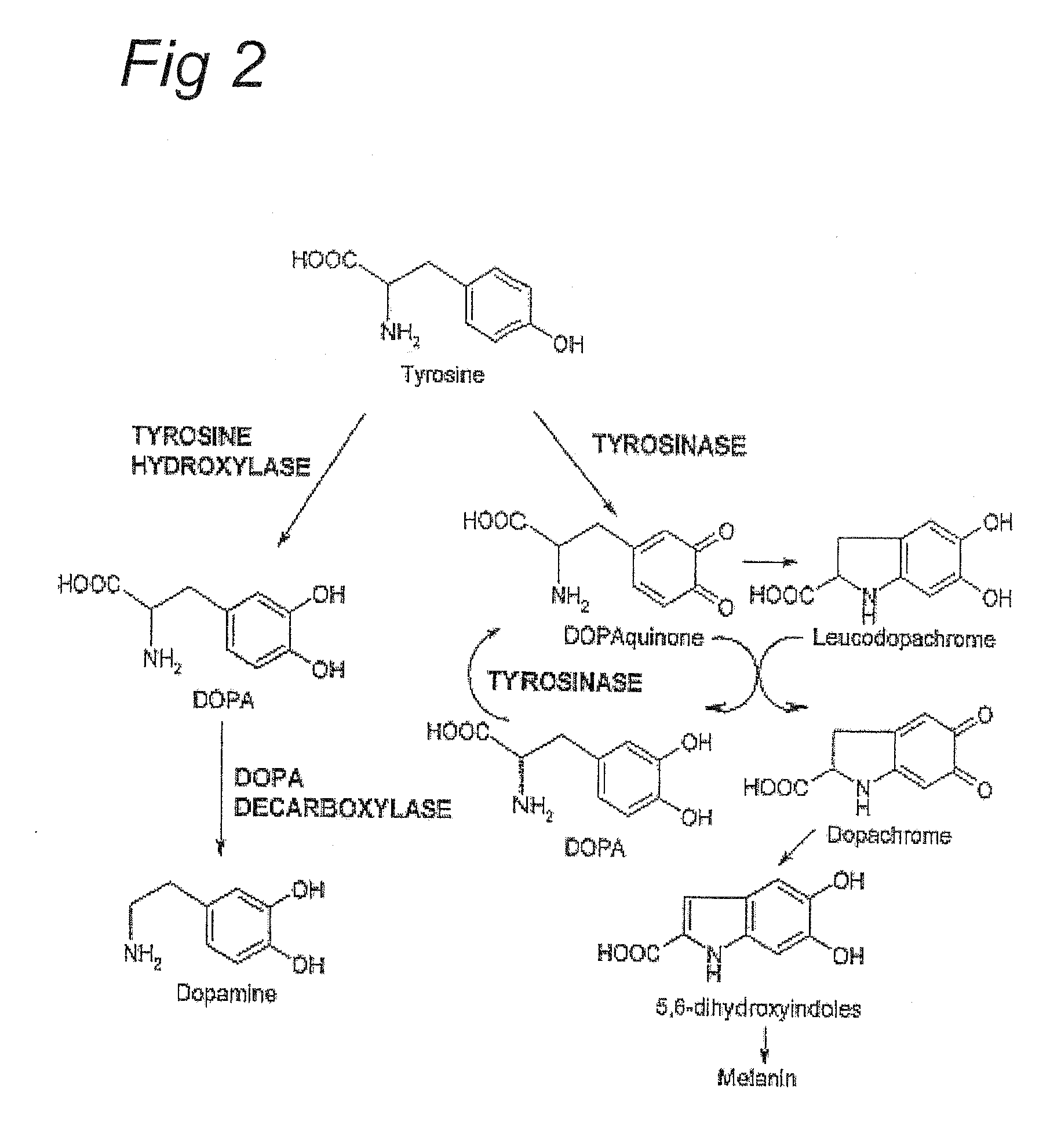Sensitization of immune system against haptenized melanoma antigens
a technology of immune system and haptenized melanoma, applied in the field of medicine, can solve problems such as severe toxic events
- Summary
- Abstract
- Description
- Claims
- Application Information
AI Technical Summary
Benefits of technology
Problems solved by technology
Method used
Image
Examples
example 1
Cream Formulation and Applications:
[0037]10-20% Monobenzone in Lanette cream, which was applied (once) daily; by topical application to the skin overlying and surrounding the melanoma lesion during 14 consecutive days, followed by tumor excision or resection. Reapplication of the cream in order to booster the immunity was performed every 2 weeks.
[0038]Injection fluid: 1-5% Monobenzone was dissolved in ethanol and subsequently diluted in water. The composition was injected inside the melanoma tumor or metastases or in a melanocytic nevus and reapplication every 2 weeks during 3 months to booster the response.
[0039]Any other monophenol or benzenediol (surrogate substrates) metabolized by tyrosinase into an orthoquinone can replace Monobenzone as the active ingredient. Also a mixture of two ore more surrogate substrates could be utilized for the sensitizing formulation. The concentration of the active constituents may vary from 0.1% to 20%.
[0040]The formulated cream and injection fluid...
PUM
| Property | Measurement | Unit |
|---|---|---|
| tyrosinase enzyme activity | aaaaa | aaaaa |
| reactivity | aaaaa | aaaaa |
| cytotoxic reactivity | aaaaa | aaaaa |
Abstract
Description
Claims
Application Information
 Login to View More
Login to View More - R&D
- Intellectual Property
- Life Sciences
- Materials
- Tech Scout
- Unparalleled Data Quality
- Higher Quality Content
- 60% Fewer Hallucinations
Browse by: Latest US Patents, China's latest patents, Technical Efficacy Thesaurus, Application Domain, Technology Topic, Popular Technical Reports.
© 2025 PatSnap. All rights reserved.Legal|Privacy policy|Modern Slavery Act Transparency Statement|Sitemap|About US| Contact US: help@patsnap.com


